How to Use ROUND Function in Google Sheets?

When working with Google Spreadsheets, our tables can have decimals. Working with them is pretty easy in Google Spreadsheets. However, we often want to get rid of them for ease of reading and to avoid image crowding when displaying in graphics. We use the Round function to perform this function.
How we want to do the rounding, the use of the function will change accordingly. Let's examine it in order.
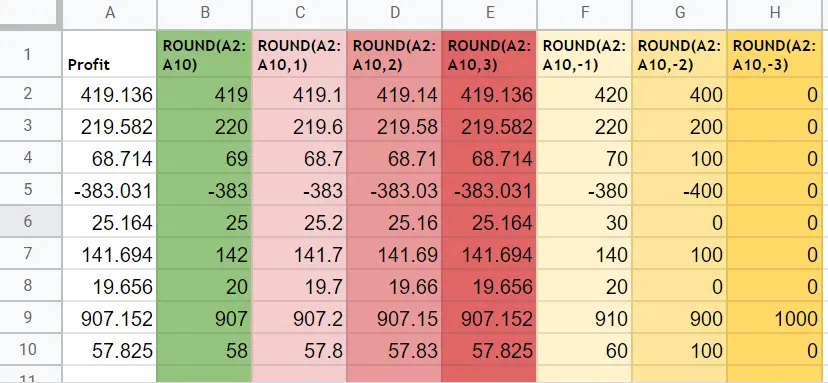
How does the rounding function work?
In this table, we will examine how the profit values are rounded. The rounding function works by specifying a range of cells and digits.
- Green column =ROUND (range of cells) place value is 0 here.
- Pink columns =ROUND (cell range, (1,2,3)) increase the place value according to the darkness of the pink color.
- Yellow columns =ROUND (cell range, (-1,-2,-3) ) increase the digit value according to the hue of the yellow color.
Now let's examine the columns one by one:
Green column→ =ROUND (range of cells)
It evaluates the numbers after the comma. If it's more than 5, it goes up, if it's less than 5, it stays the same. This is basic rounding logic.
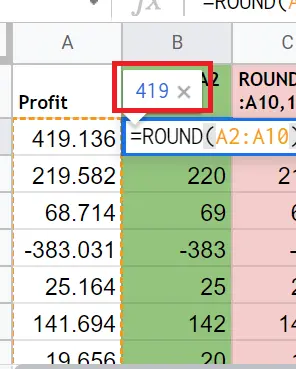
- =ROUND(419.136)→ 419
Left it as it is because there is '1' after the comma.
- =ROUND(219.582)→ 220
Rounded up because there is '5' after the comma.
- =ROUND(68.714)→69
Rounded up because there is '7' after the comma.
How to round to decimal?
=ROUND(cell range, place value) Let's examine the columns we see above as pink and yellow one by one. We can leave the round function blank, as well as give it a place value and round it accordingly. Let's start with the pink column.
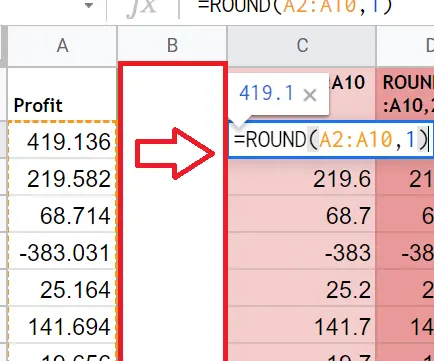
Pink column→=ROUND(cell range, 1 or 2 or 3)
- =ROUND(cell range, 1 )
This function rounds the first digit after the comma. How does it work?
- Look at the number next to the first number after the comma.
- Round up if greater than 5, round down if less than 5.
- Print the value of the first number after the comma.
=ROUND( 25.164,1)→25.2
There is '1' after the comma. After '1' came '6' (greater than 5). Then round '1' up, make '2'.
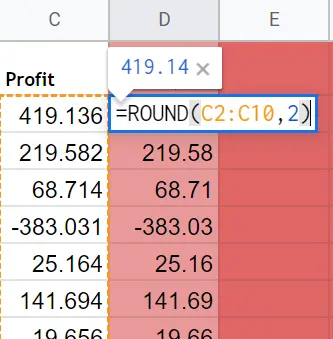
2. =ROUND(cell range, 2)
How does it work?
Take the first two digits after the comma. Then round up '10' if the next number is greater than 5, otherwise, leave the same.
=ROUND(19.136,2)🡪19.14
Look at 13. Then there is 6(greater than 5) Round 🡪14
=ROUND(68.714,2)🡪68.714
Look at 71. There is a 4 after it. Stays the same🡪68.714
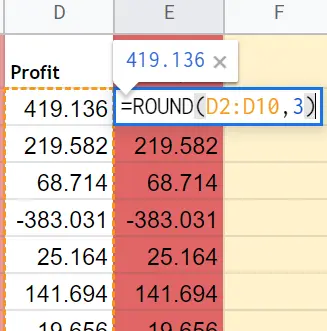
3. =ROUND(cell range, 3)
How does it work?
We leave the place value after the comma as it is since there is no number to evaluate after 3.
Yellow column→=ROUND(cell range, -1 or -2 or -3)
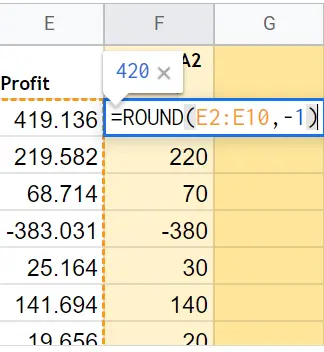
- =ROUND(cell range, -1)
This function rounds the first digit after the comma. How does it work?
Removes the numbers after the comma and rounds to the nearest decimal value.
=ROUND( 419.136,-1)🡪420
Since the nearest decimal to 19 is 20, it rounds to 20. Result: 420
=ROUND( 141.694,-1)🡪141.
Since the nearest decimal to 41 is 40, it rounds to 40. Result: 140
2. =ROUND(cell range, -2)
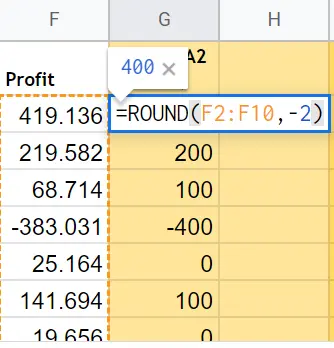
This function rounds the first digit after the comma. How does it work?
Removes decimals and rounds to the nearest hundred.
- =ROUND( 419.136,-2)🡪400
Since the nearest hundred to 419 is 400, it rounds to 400. Result: 400
- =ROUND( 141.694,-2)🡪100
Since the nearest hundred to 141 is 100, it is rounded to 100. Finish: 100
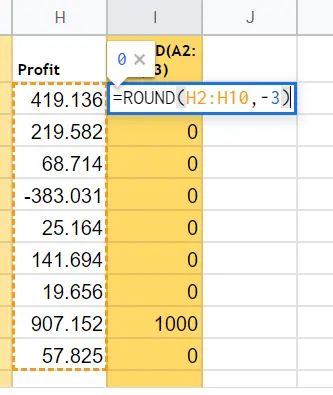
3. =ROUND(cell range, -3)
This function rounds the first digit after the comma. How does it work? Removes decimals and rounds to the nearest thousand.
It gets 907.152🡪1000
Since the nearest hundred to 907 is 1000, it rounds to 1000. returned all others as '0'.










